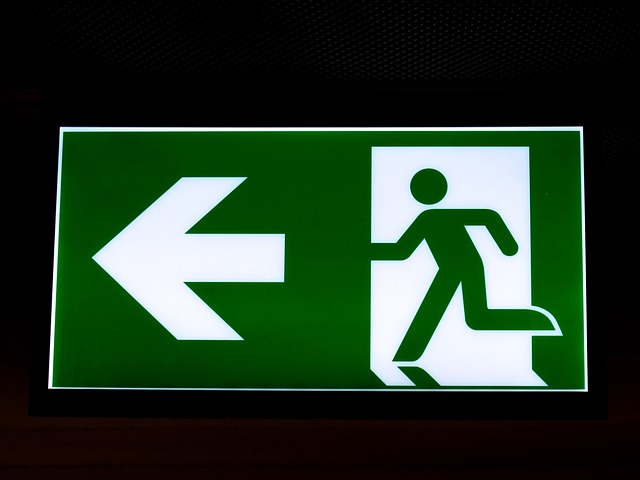Establishing a Foundation for an Emergency Fund: Your First Step Toward Financial Peace
Building an emergency fund is an essential step toward financial security, yet it's often overlooked. Learn practical, motivating ways to establish and grow an emergency fund that can help you weather life's unexpected events.
In today’s fast-paced world, life’s unexpected moments can arrive without warning: an unplanned medical expense, sudden car repairs, or even job loss. These events can be unsettling, especially when finances are tight. This is where an emergency fund comes in. An emergency fund acts as your financial safety net, designed to protect you and your family from financial hardship in tough times.

Why an Emergency Fund Is Non-Negotiable
An emergency fund is not just another savings account; it is your peace of mind. While it’s common to focus on saving for dreams and goals, like a vacation or a new home, building an emergency fund addresses a more fundamental need: stability. Financial experts recommend establishing a fund to cover three to six months of living expenses, though starting with a smaller goal, like $500 or $1,000, can give you the confidence to build further.
Without an emergency fund, unexpected expenses often lead to credit card debt or dipping into other savings, which can spiral into more stress and debt over time. A well-established emergency fund, however, is there to provide a cushion that prevents you from getting off track with your financial goals.
Setting Realistic, Achievable Goals
Building an emergency fund from scratch may seem daunting, but like any journey, it begins with a single step. Start by setting a goal that feels manageable. For some, this might mean $500 or $1,000 initially. Once you reach that, you can continue to expand the fund, aiming for one month of expenses, then two, and eventually the recommended three to six months.
One useful approach is the “reverse budgeting” method, where you prioritize setting aside a certain amount for savings before spending on other categories. This way, savings become an automatic part of your financial routine rather than an afterthought.
Small, Consistent Contributions Matter
The key to building an emergency fund lies in consistency. Even small, regular contributions can quickly add up. Imagine setting aside $10 each week; in a year, you’ll have over $500, which can be a substantial starting point. Try to automate this process by setting up automatic transfers to a separate savings account, ensuring you won’t forget or get tempted to spend the money elsewhere.

Also, consider lifestyle adjustments that can free up additional funds for your emergency savings. This doesn’t mean overhauling your entire budget or depriving yourself of simple pleasures, but small changes—like preparing meals at home or canceling unused subscriptions—can yield savings that grow your emergency fund.
Keeping It Separate but Accessible
Your emergency fund should be in a separate, dedicated account. This keeps the money from mingling with everyday spending, reducing the temptation to dip into it for non-emergencies. A high-yield savings account, often offered by online banks, can be ideal. These accounts typically offer better interest rates than standard savings accounts, helping your money grow while remaining accessible.
Remember, the goal is to make the fund accessible in emergencies. Avoid tying it up in investments or accounts with withdrawal penalties, as they may limit access when you need it most. This separation also serves as a psychological barrier, reinforcing the idea that these funds are reserved for true emergencies only.
Building the Habit and Mindset of Savings
Creating a habit of saving isn’t only about money; it’s about establishing a mindset that values preparation. Building an emergency fund teaches you to be proactive rather than reactive with your finances, reducing stress and uncertainty when life throws a curveball. Rather than viewing an emergency fund as a one-time goal, approach it as an ongoing practice, much like fitness or wellness routines.
One strategy to build this habit is to track your progress. Watching your emergency fund grow—even if slowly—can reinforce positive behavior. Consider using a savings app or a visual tracker to celebrate milestones, like hitting $100, $500, or each month’s worth of expenses. Seeing the results of your efforts can increase motivation, making saving feel rewarding rather than restrictive.
Avoiding Common Pitfalls
Once you start building your emergency fund, it’s essential to stay on track and avoid common mistakes that might erode your progress. Here are a few key pitfalls to avoid:
Using the Fund for Non-Emergencies: It can be tempting to dip into your emergency fund for a great deal on a vacation or holiday shopping. However, it’s essential to reserve this money for true emergencies only—unexpected expenses that you couldn’t foresee, like a medical issue, urgent car repair, or loss of income.

Neglecting to Replenish After Use: Sometimes, using your emergency fund is inevitable. If you do need to tap into it, make replenishing it a priority, even if it means returning to smaller contributions for a while. The quicker you can restore the fund, the better prepared you’ll be for future emergencies.
Overlooking the Importance of Flexibility: As your life circumstances change, so should your emergency fund. If you have a new expense, like a mortgage, or if you face a period of instability, consider adjusting your emergency fund target accordingly. Regularly revisiting and reassessing your needs helps keep the fund relevant and effective.
Celebrating Milestones and Progress
Reaching a fully funded emergency account—whether that’s $500, $1,000, or six months of expenses—is something to be proud of. Marking these milestones is essential for maintaining momentum. When you reach a new level of security, take a moment to celebrate your commitment to financial health. Recognizing these achievements can reinforce positive habits and make it easier to maintain your savings mindset.
Growing Beyond the Emergency Fund
Once you’ve established a comfortable emergency fund, consider expanding your savings strategy to include other financial goals. Having a solid emergency fund can serve as a springboard to further financial growth, such as investing, retirement planning, or saving for specific goals, like a down payment on a home. The confidence that comes from a fully funded emergency account can empower you to take on new financial challenges with resilience and foresight.
The Long-Term Benefits of Financial Security
Establishing an emergency fund isn’t just about handling immediate expenses—it’s about building a foundation for long-term financial health. Knowing that you have a financial cushion in place can improve your outlook, reduce stress, and allow you to focus on building a better future. When you’re prepared for the unexpected, you can approach life’s uncertainties with confidence, making it easier to achieve your other financial aspirations.
Building an emergency fund may take time, but the rewards far outweigh the effort. A sense of control over your financial life and the peace of mind it brings make every small step worthwhile. Whether you’re just beginning or working toward expanding your savings, establishing this foundation is an invaluable step toward a secure and fulfilling financial journey.

